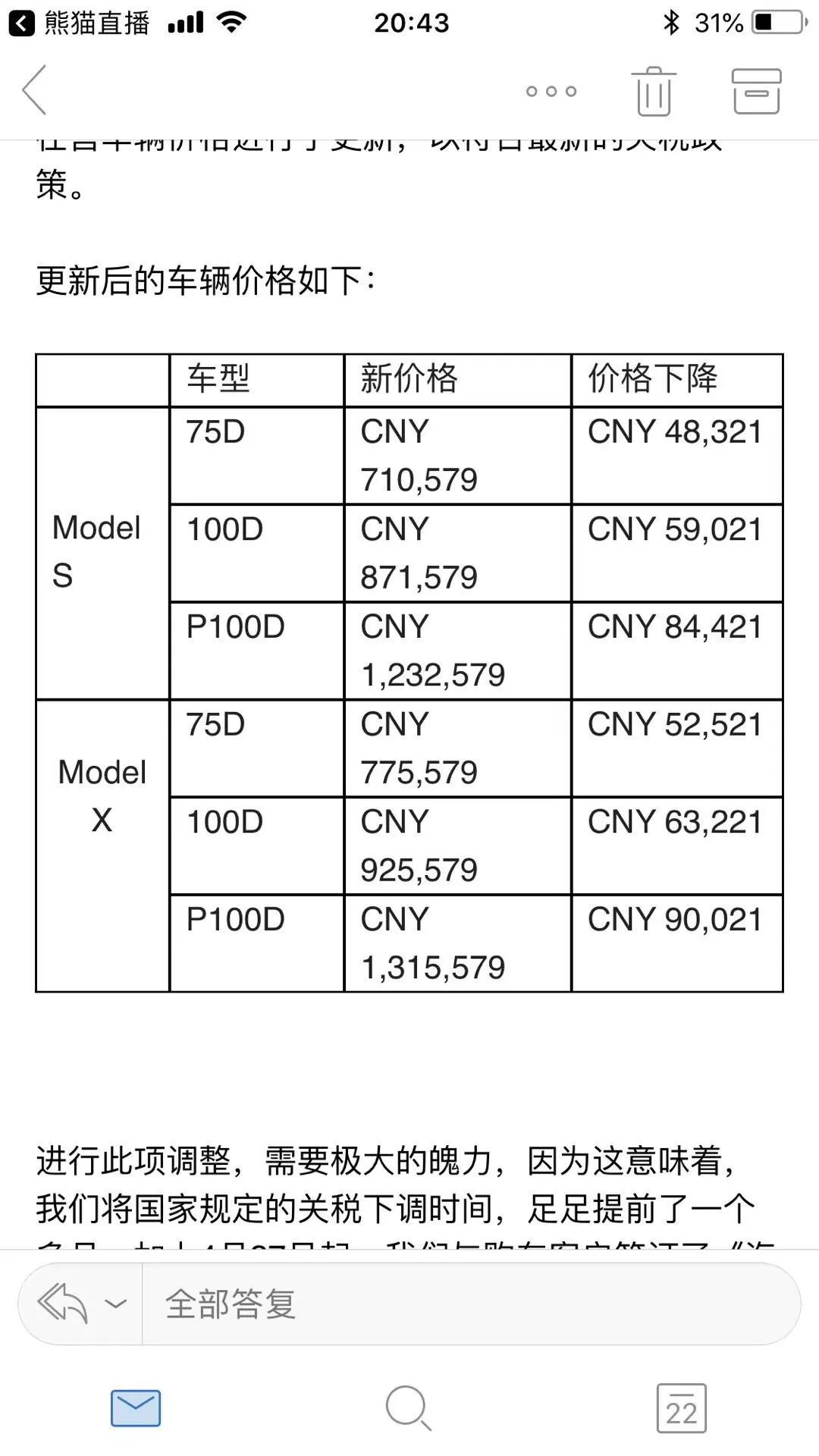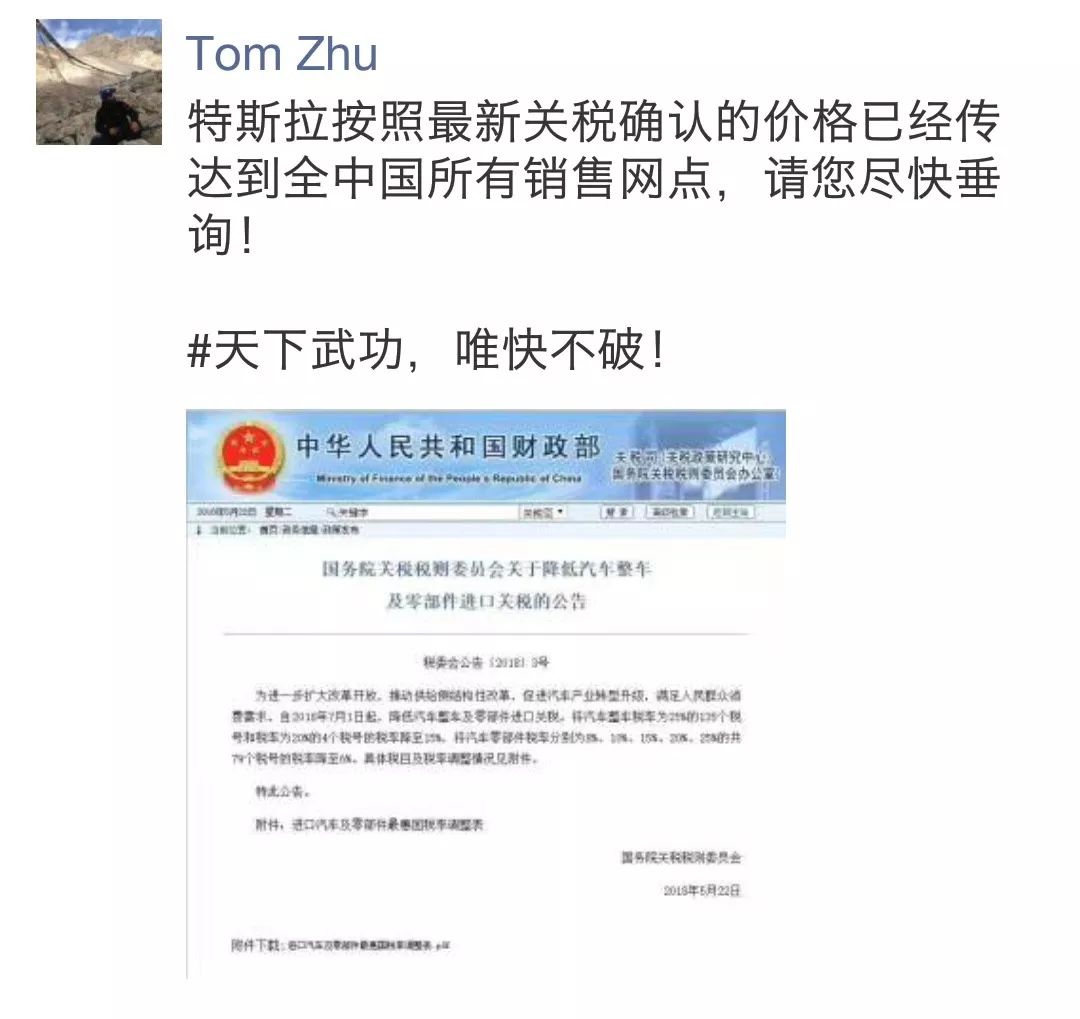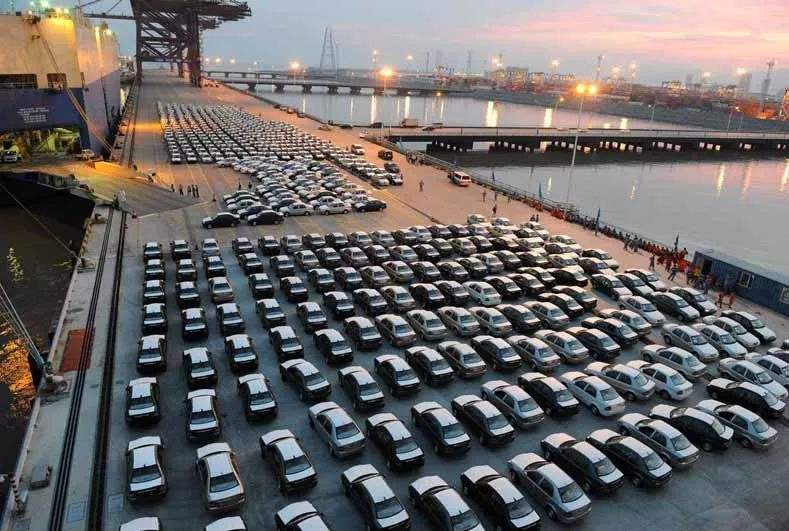Without any precaution, this afternoon, the Customs Tariff Commission of the State Council announced a reduction in import tariffs for automobiles and auto parts. The tariff rate for whole vehicles has been uniformly reduced from 25% and 20% to 15%. Previously, both Tesla CEO Elon Musk and US President Donald Trump complained about China’s high automobile tariffs on Twitter. Let’s take a look at Tesla’s attitude towards the tariff reduction.
First, let’s reveal the prices after the adjustment that you are most concerned about:


To summarize briefly: the prices of Model S 75D/100D/P100D will be reduced by about 50,000/60,000/90,000 yuan respectively, and the prices of Model X 75D/100D/P100D will be reduced by about 50,000/70,000/100,000 yuan respectively.
Actually, I don’t care about whether the price is high or low when buying a car, as I can’t afford it anyway. Now let me discuss some of the points that have left an impression on me in this matter.
First, let’s review the major car manufacturers this afternoon. After the announcement of the tariff reduction, the traditional car manufacturer Porsche was the fastest to respond. At around 5 pm, Porsche announced that it had begun to evaluate China’s new automobile tariff policy and would announce its pricing adjustment measures later. Shortly thereafter, Toyota announced that it would lower the prices of cars exported to China. BMW then issued a statement saying that it planned to respond actively after evaluating the situation. This only took less than an hour.
Three traditional car manufacturers took action ahead of Tesla. Considering that Tesla has not yet built a factory in China, and all its products are imported cars, Tesla was a step behind in responding.
Later, the Tesla management team struck back with a swift move: Tesla China President Zhu Xiaotong updated his WeChat Moments, saying “Tesla has conveyed the newly confirmed tariffs to all sales outlets in China according to the confirmed price, please inquire as soon as possible!”

The fastest way to win the competition is through speed.
While some peers were issuing statements, and others were preparing to issue statements, Tesla had completed the synchronization and decision-making of information with its headquarters regarding the tariff reduction price, and then synchronized the decision-making results to sales outlets across the country.### But there is still a problem
The above tariff adjustment policy will be implemented from July 1, 2018. That is to say, all orders placed before July 1, 2018, including those generated from Zhu Xiaotong’s post, need to continue to pay a 25% tariff, but the calculation on the user end is based on 15%. What about the price difference? Of course, Tesla will subsidize it.
What do we think about it?
On one hand, under the leadership of Elon Musk, Tesla is willing to support the tax reduction policy at the cost of reducing profit margin in the second half of the year, and Tesla China’s eager anticipation for the new policy is clearly shown. On the other hand, the official compensation for the price difference means that Tesla China must have synchronized information with the US headquarters. The decision-making efficiency of Tesla is worth the attention of traditional automakers.
Elon Musk has always been committed to enhancing corporate operational efficiency through informatization and has high demands for high-frequency and high-efficiency communication and iteration. Tesla has already made the iteration of the automotive industry more like that of an Internet company.
In late July of last year, the Beijing New Energy Vehicle Industry Association issued a notice promoting the upgrade and reconstruction of the new national standard for electric vehicles and private charging facilities in the city. In mid-October, the product definition, design, research and development, and mass production of the “new national standard version” model with both direct current and alternating current (DC/AC) charging interfaces were fully landed.

Li Xiang, CEO of CHJ Automotive, has also mentioned the information revolution capacity of traditional enterprises brought by IT systems. Tesla Model S is the first model with excellent three-electronic system performance in history. However, until today, Chevrolet Bolt, Jaguar i-Pace, Porsche Mission E, Audi e-tron, NIO ES8…It doesn’t seem to be very difficult to create an excellent pure electric vehicle model, but it is extremely difficult to create an enterprise that truly combines the Internet and automotive industry operations to improve efficiency (instead of introducing gimmicks to the car itself).
Do you think that’s all?
On May 14, Elon Musk issued a company-wide email:
To ensure that Tesla is well prepared for the future, we have conducted a thorough reorganization of the company. As part of the restructuring, we are flattening the management structure to improve communication efficiency and streamlining and integrating those reasonable activities that are not important to our successful mission.
A new storm is coming. :)From my observation, companies in the new car industry have been committed to using enterprise-level IT systems to significantly improve operational efficiency; NIO directly hired Ganesh V. Lyer, former CIO of Tesla, to serve as NIO’s CIO and global digital operation director, reporting directly to Li Bin; among traditional car companies, General Motors acquired Cruise Automation, a startup that is pushing GM to establish an efficient communication and development process, and it is highly respected by GM CEO Mary Barra.
Instead of issuing statements, car manufacturers should reflect on why they are not able to adjust their prices as quickly as Tesla nationwide.
The first pure electric vehicle, Audi e-tron quattro, is coming in August
Which one is more unreliable, Tesla’s localization or being acquired by Apple?
This article is a translation by ChatGPT of a Chinese report from 42HOW. If you have any questions about it, please email bd@42how.com.
